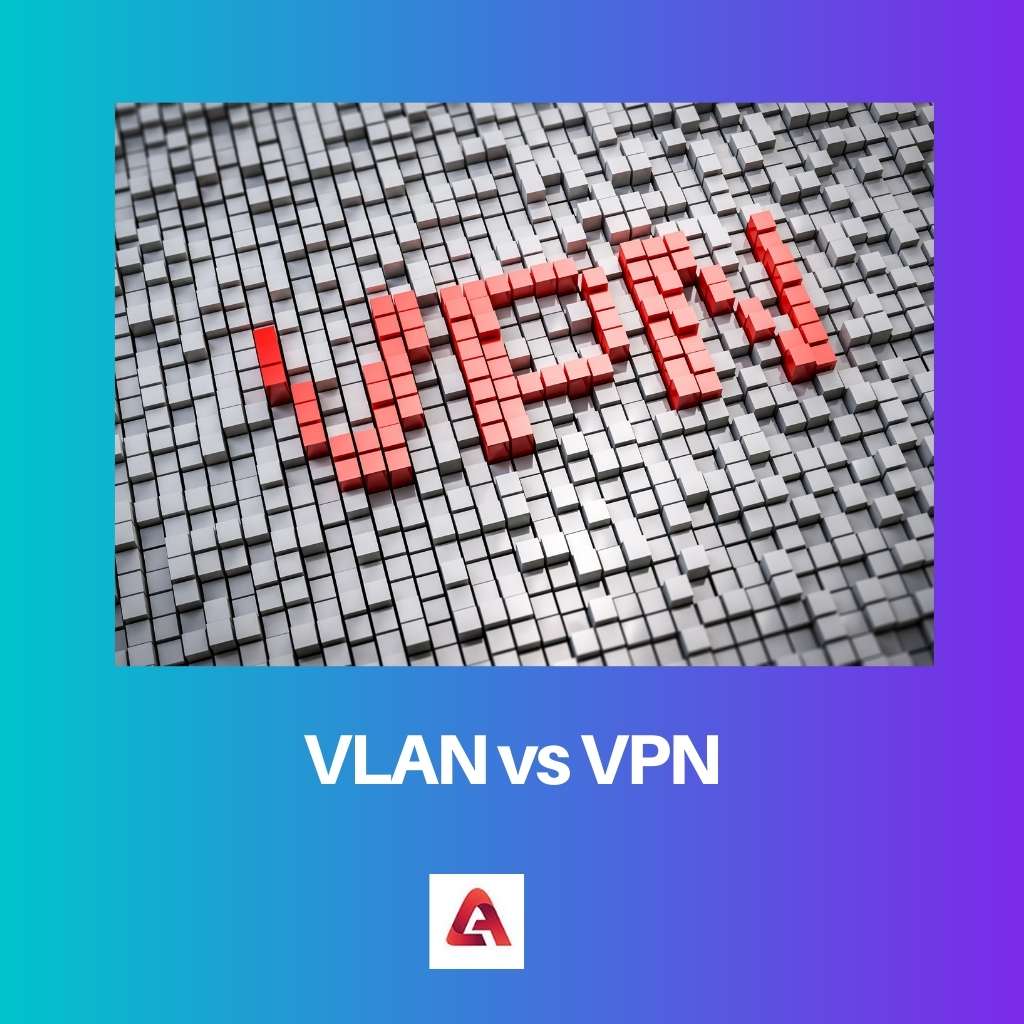Despite the importance of the internet in our everyday life, starting from GPS to office work, very few know the intricacies that lie behind the router box.
There exist several types of networks that help in the browsing of the internet in a safe and secure way. Two such networks are VLAN and VPN, both of which deal with the virtual platforms and help connect offices and companies internally and externally.
Key Takeaways
- VLANs (Virtual Local Area Networks) segment a local network into smaller, isolated networks, while VPNs (Virtual Private Networks) securely connect remote networks or users over the internet.
- VLANs improve network performance and security within a local network, while VPNs encrypt data and provide anonymity for users.
- VLANs are used in business environments to manage network traffic, whereas individuals and businesses use VPNs for secure remote access.
VLAN vs VPN
VLAN is a technique used to group together devices that are physically located on different network segments into logical groups that share the same broadcast domain. VPN is a technology that allows remote users to securely connect to a private network while securing their IP addresses.

VLAN stands for virtual LAN, LAN refers to the local area network.
VLANs allow for the administrators of the network to group the hosts in a single location even when the hosts in question are not connected administrators to group hosts together, even if the hosts are not directly coned to the same network switch.
VPN is the abbreviation to the network that extends a private network that allows the users of the VPN to send and receive data by sending it across a public network.
This acts in a way that makes it seem as though the computing devices are directly connected to the private network.
Comparison Table
| Parameters of Comparison | VLAN | VPN |
|---|---|---|
| Full form | VLAN expanded refers to Virtual Local Area Network. | VPN is the abbreviation to Virtual Privat Network. |
| Purpose | VLAN helps in connecting devices that are geographically separate. | VPN is used in connecting authorized users to corporate network users. |
| Commercial content | VLAN is popularly used by companies to group the devices that are in different locations. | VPNs serve both personal and official purposes by providing secure networks. |
| Security | By comparison, VLAN offers a lesser security guarantee. | VPN is used mainly for its transmission safety net. |
| Price | VLANs are less expensive. | VPNs come at a pricey rate. |
What is VLAN?
VLAN is a common sub-part of a large network that is used in the operation of standard LANs. It consists of various devices and their respective endpoints in a specified area of a geographical constraint.
The purpose of a VLAN is to connect these devices. It is of great assistance in a commercial forum as it helps organizations connect easily and allows the smooth functioning of work across a limited area of space.
VLANs are capable of creating a virtual or logical subnet of concentrated endpoints in separate LANs. They are a separate entity from remote access technologies but share their uses.
Predominantly used for commercial and business purposes, VLAN is not chosen for personal networks.
The core segmentation of VLAN allows for executing control over the network traffic, helps in boosting the security of the endpoints, and greatly removes the complexity of network administration.
This collection of devices is configured on a single or multiple LANs and interacts at the data link layer. The functioning of VLANs does not have to be concentrated at any single point.
VLANs enable the logical grouping of devices in an array of locations and lessens the requirement for router deployment. This, in turn, reduces the costs to a great extent.
Furthermore, VLANs help in easy broadcasting control and segmentation.

What is VPN?
VPN, referring to Virtual Private Network, talks about the software used in connecting employees to the company’s network.
It also plays a major role in the connection of network resources through connections that are encrypted. This allows for only authorized users to access the resources mentioned above.
A remote access technology spectrum, VPN has prevailed a long time in the world of fast-moving technology. This technology is used to extend a secure private network over a public network, that is, the Internet.
This is a safe platform that is used in high frequencies by companies, organizations, institutes, and for personal use. It allows the user to work on confidential or sensitive data with no fear of exposure.
This virtual private network is established by creating a virtual connection from a point-to-point area by making use of circuits and tunneling protocols over the already existing networks.
VPNs that are available on the public Internet are capable of providing certain qualities of the wide-area network, known as the WAN.
VPN can be accessed remotely by the user from the available resource within the private network.
Since public networks cannot always guarantee the privacy and protection needed for personal and professional data, this sends for the need for VPN.

Main Differences Between VLAN and VPN
- VLAN is the short form of Virtual Local Area Network. Its counterpart VPN stands for Virtual Private Network.
- VLAN helps connect multiple devices across geographical areas using the end-points of these devices scattered in different places. VPN helps in the provision of safe and secure network access that protects the input and output data.
- A VLAN is considered to be a subcategory of VPN. This makes VPN in possession of a wider spectrum and scope. This technology creates a virtual tunnel for secure data transmission over the Internet.
- A virtual local area network minimizes the requirement for routers. A VPN is used to increase the efficiency of a network.
- VLAN is less expensive to obtain than VPN. VPN is comparatively more expensive.

